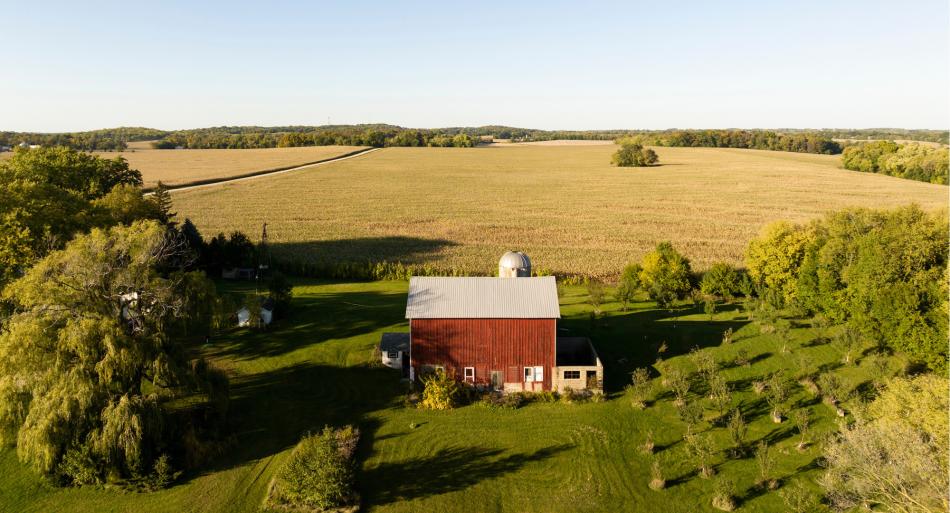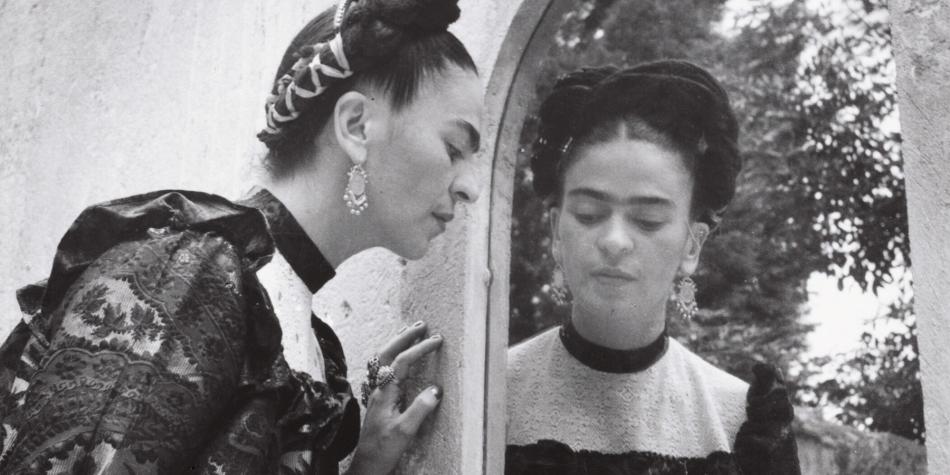Haying
1939
Grant Wood
Painter, American, 1891 - 1942

The Iowa painter Grant Wood, along with John Steuart Curry and Thomas Hart Benton, was one of the leading midwestern American regionalist painters. Created in 1939, just as the country was beginning to recover from the ravages of the Great Depression, Haying and its companion New Road are representative examples of the idealized landscapes of rural Iowa that the artist had begun to paint in 1930. They show no trace of the severe economic problems and natural disasters that had beset Iowa farmers for almost a decade. Using a detailed, deliberately naïve style, such works typically include the cultivated lands, farms, manual farm machinery, windmills, and domestic animals characteristic of Iowa. Haying and New Road serve as both optimistic celebrations of better times to come and subtle portrayals of the state of American life as it turned from the calamities of the 1930s to the even more ominous challenges of World War II. These subjects were also motivated in part by Wood’s rejection of the cultural hegemony that the urban Northeast held over the rest of the country and his belief that an artist has a special rapport with his own native area. Suspended in time and poised at a particularly fraught moment in the history of the country, they are replete with the ambiguities and subtle ironies that underlay Wood's seemingly benign, straightforward regionalist vision.
Artwork overview
-
Medium
oil on canvas on paperboard mounted on hardboard
-
Credit Line
-
Dimensions
overall: 32.8 x 37.7 cm (12 15/16 x 14 13/16 in.)
framed: 53.3 x 58.4 cm (21 x 23 in.) -
Accession Number
1982.7.1
More About this Artwork

Article: Modernist Barns and Modern Farmers
How Grant Wood, Georgia O’Keeffe, and Thomas Hart Benton depicted the humble structures—and how they mask the struggles of farmers today.

Article: 15 LGBTQ+ Artists to Know
Discover the lives of 15 LGBTQ+ artists and their art, much of which you can see at the National Gallery.
Artwork history & notes
Provenance
The artist; sold to Irwin [1880-1953] and Clara R. Sax [1889-1981] Strasburger, White Plains, New York, by 1944;[1] bequest 1982 to NGA.
[1] Darrell Garwood, Artist in Iowa: A Life of Grant Wood, New York, 1944: 222, 254.
Associated Names
Exhibition History
1939
Fine Arts Festival, Memorial Union, University of Iowa, Cedar Rapids, 1939.
1981
John Steuart Curry and Grant Wood: A Portrait of Rural America, Cedar Rapids Art Center; Edwin A. Ulrich Museum of Art, Wichita State University; Museum of Art and Archaeology, University of Missouri-Columbia, 1981, fig. 149.
1985
America in Transition: Benton and His Contemporaries, 1920-1940, Williams College Museum of Art, Williamstown, Massachusetts, 1985.
1987
Extended loan for use by Vice President and Mrs. George Bush, Vice President's House, Washington, D.C., 1987-1989.
1990
Loan to display with permanent collection, Cedar Rapids Museum of Art, 1990-1991.
1991
One-Hundredth Birthday Anniversary Celebration, Cedar Rapids Museum of Art, 1991.
1994
Barn Again, National Building Museum, Washington, D.C., 1994, no catalogue.
1995
Grant Wood: An American Master Revealed, Joslyn Art Museum, Omaha, Nebraska; Davenport Museum of Art, Iowa; Worcester Art Museum, Massachusetts, 1995-1996, no. 55, pl. 9.
2008
Double Lives: American Painters as Illustrators, 1850-1950, Brandywine River Museum, Chadds Ford; New Britain Museum of American Art, 2008-2009, unnumbered catalogue.
2016
Grant Wood and the American Farm, Reynolda House Museum of American Art, Winston-Salem, 2016, no catalogue.
2018
Grant Wood: American Gothic and Other Fables, Whitney Museum of American Art, New York, 2018, no. 96, repro.
Bibliography
1971
Garwood, Darrell. Artist in Iowa: A Life of Grant Wood. (New York, 1944) Reprint Westport, CT, 1971: 222, 254.
1975
Dennis, James M. Grant Wood: A Study in American Art and Culture. New York, 1975: 93-94, color pl. 35.
1981
Czestochowski, Joseph S. John Steuart Curry and Grant Wood: A Portrait of Rural America. Columbia, MO, 1981: fig. 149.
1992
American Paintings: An Illustrated Catalogue. National Gallery of Art, Washington, 1992: 384, repro.
1994
Schenker, Heath. “Picturing the Central Valley.” Landscape 32, no. 2 (1994): 8, repro.
1995
Roberts, Brady M., James M. Dennis et al. Grant Wood: An American Artist Revealed. Exh. cat. Joslyn Art Museum, Omaha, NE; Davenport Museum of Art, IA, and the Worcester Art Museum, MA, 1995-1996. Davenport and San Francisco, 1995: 3, 73, color pl. 9.
2018
Haskell, Barbara, and Glenn Adamson. Grant Wood: American Gothic and Other Fables. Exh. cat. Whitney Museum of American Art, New York, 2018: 30, color pl. 96.
Inscriptions
lower left: © GRANT / WOOD / 1939
Wikidata ID
Q20193218



